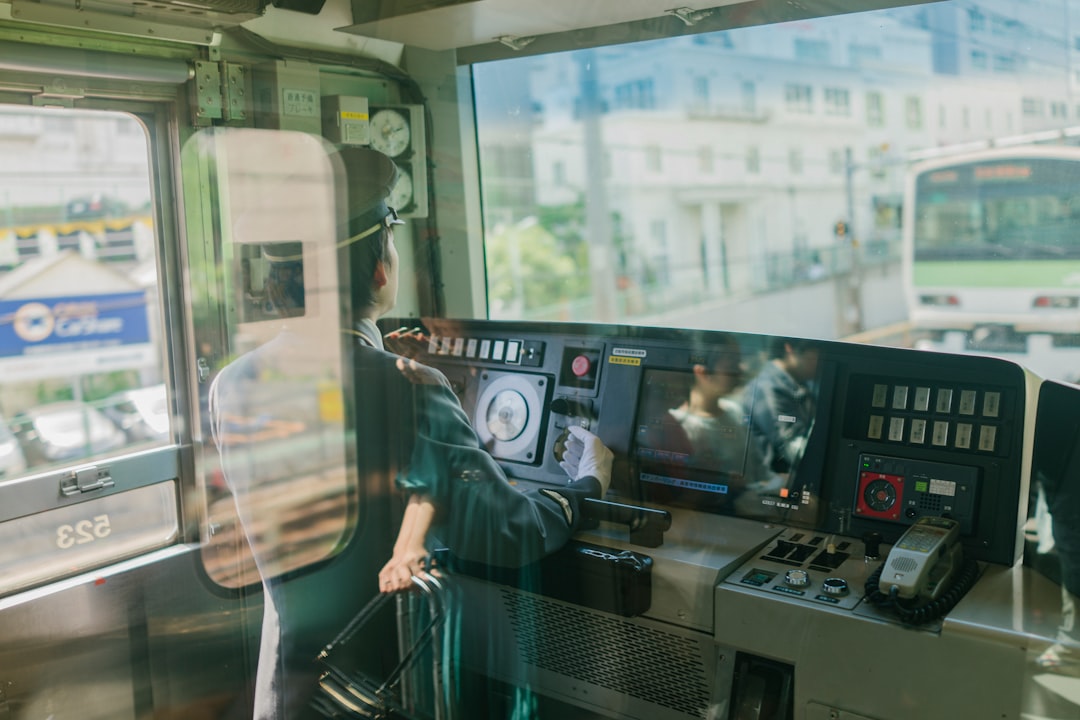Train Driver Kaitaraiwa Rerewhenua
Train drivers drive passenger or freight trains. They may shift (shunt) carriages and wagons using trains or remote controls.
Train drivers may do some or all the following:
- drive trains, either in cabs or with remote controls
- keep to schedules, and stop at stations to pick up or drop off passengers
- link and unlink carriages and wagons
- drive a locomotive (train engine) or use remote controls to shunt (push or pull) carriages and wagons to make up new trains
- check locomotives
- read about maintenance work happening on the tracks they drive on, and any rule changes
- operate points (levers that switch tracks)
- communicate with train control, other drivers and shunters, and passengers
- prepare documents about wagon loads
- act promptly and comply with safety rules during emergencies or breakdowns
- identify and fix or report faults with their equipment.
Physical Requirements
Train drivers need to have:
- good hearing and eyesight (with or without corrective lenses)
- accurate colour vision to correctly recognise signals and other instructions
- good reflexes
- excellent fitness and health, and good strength as they need to lift train parts that can weigh up to 25 kilograms.
They also need to be comfortable working in confined spaces.
Useful Experience
Useful experience for train drivers includes:
- physical work in a setting where safety is important
- work in a shunting yard or other train-related work
- mechanical or engineering work.
Personal Qualities
Train drivers need to be:
- safety-conscious
- able to stay alert for long periods while working alone
- punctual
- able to think ahead and anticipate problems
- able to stay calm under pressure and in emergencies
- good communicators, in person and by radio.
Skills
Train drivers need to have knowledge of:
- emergency and safety procedures and first aid
- how to operate a locomotive (train engine) and its mechanics, including air brakes and electrics
- rail-operating codes and signals
- safety rules and regulations
- the correct way to use radio equipment
- shunting (pushing and pulling carriages and wagons using trains or remote controls).
Conditions
Train drivers:
- do shift work, including nights and public holidays
- work in drivers' cabs, outside in railway yards, and on train tracks in all weather
- work in confined spaces and conditions that are hazardous (because they work with large machinery), and sometimes stressful (because there is a risk of hitting cars, animals or people on the tracks)
- travel within or between cities each day.
Subject Recommendations
No specific secondary education is required for this job but maths, English, and construction and mechanical technologies to at least NCEA Level 2 is useful.
For Year 11 to 13 students, the Gateway programme is a good way to to gain industry experience. This programme may help you gain a job but doesn't reduce the amount of time it takes to complete your training.
Train Drivers can earn around $27-$43 per hour.
Pay for train drivers varies depending on their experience and role.
- Trainee train drivers usually earn $27 to $43 an hour.
- Qualified train drivers usually earn $47 to $53 an hour.
- Team leaders and trainers can earn up to $58 an hour.
Shift work and overtime increases their take-home pay.
Source: Transdev Wellington, Hyundai Rotem and Rail and Maritime Transport Union, 'Multi-Employer Collective Agreement – 3 July 2022 - 2 July 2024', 2022.
Experienced train drivers may move into managerial or training roles. They may also progress to become station managers or train controllers.
Years Of Training
1 year of training usually required.Becoming a train driver
To become a qualified train driver you need to:
- have a full, clean driver's licence and no criminal convictions
- pass strict tests to show you are physically and mentally capable of being a train driver
- pass medical, drug and alcohol tests
- successfully complete on-the-job theory and practical training
- complete a New Zealand Certificate in Rail Operations (Level 4).
Becoming a shunter
To become a shunter, who shifts (shunts) carriages and wagons using trains or remote controls, you need to:
- pass a basic entry test and a medical test, which includes drug testing
- take training and induction courses run by KiwiRail.

 Hagley Community College
Hagley Community College